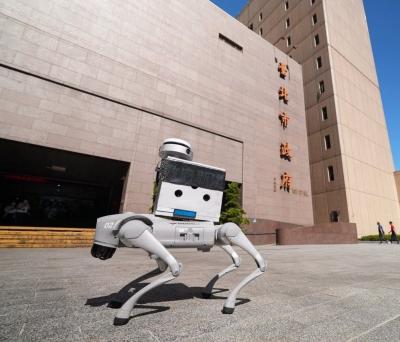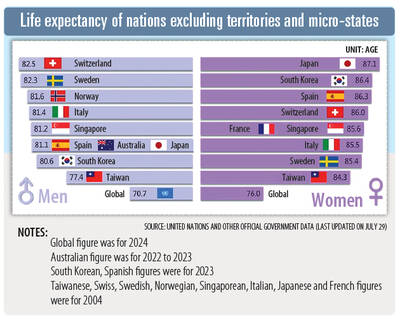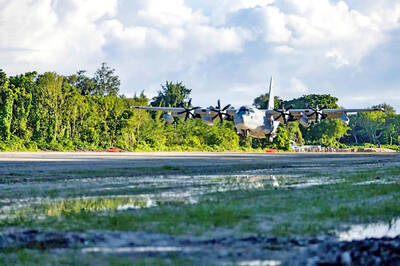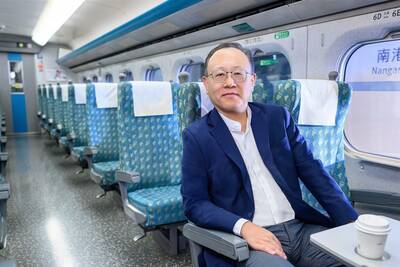The Ministry of National Defense’s reported move to cut 2 percent of the army’s chemical unit as part of its Elite Forces Plan was met with opposition and questions in light of the disasters that have befallen Japan.
The Elite Forces Plan is part of the ministry’s preparations to phase out compulsory military service and replace it with a voluntary program.
A report from the Control Yuan on Thursday suggested that the ministry plans to reduce the total number of active forces from 275,000 to 215,000, which would lower the relative proportion of personnel and equipment available for disaster relief and prevention.
Saying that disaster relief and prevention are already the primary missions for the army, Chinese Nationalist Party (KMT) Legislator Justin Chou (周守訓) said the ministry should not disband necessary units just for the sake of disarmament.
According to anonymous sources, each of the three army groups nationwide has chemical units. Each unit has a reconnaissance battalion, a smoke battalion and an aid-deployment battalion.
To support the 7 million Taiwanese in the north of the country, the northern army group has appointed four companies to each battalion. Meanwhile, the central army group only has three companies to a battalion, while the southern army group only has one company assigned to each battalion.
Including those stationed on the nation’s outlying islands, the total number of soldiers in chemical units is about 2,000.
However, the ministry’s disarmament project suggests that all three aid-deployment battalions should be disbanded.
According to a decommissioned corporal, who declined to be named: “The chemical unit was reinforced after the SARS scare [in 2003], when it was discovered the nation had insufficient manpower. It’s ironic that five years later it’s being disbanded.”
The chemical unit the key line of defense against pandemics or epidemics, chemical factory fires and even the nuclear crisis in Japan, the decommissioned corporal said.

The inspection equipment and data transmission system for new robotic dogs that Taipei is planning to use for sidewalk patrols were developed by a Taiwanese company, the city’s New Construction Office said today, dismissing concerns that the China-made robots could pose a security risk. The city is bringing in smart robotic dogs to help with sidewalk inspections, Taipei Deputy Mayor Lee Ssu-chuan (李四川) said on Facebook. Equipped with a panoramic surveillance system, the robots would be able to automatically flag problems and easily navigate narrow sidewalks, making inspections faster and more accurate, Lee said. By collecting more accurate data, they would help Taipei

STATS: Taiwan’s average life expectancy of 80.77 years was lower than that of Japan, Singapore and South Korea, but higher than in China, Malaysia and Indonesia Taiwan’s average life expectancy last year increased to 80.77 years, but was still not back to its pre-COVID-19 pandemic peak of 81.32 years in 2020, the Ministry of the Interior said yesterday. The average life expectancy last year increased the 0.54 years from 2023, the ministry said in a statement. For men and women, the average life expectancy last year was 77.42 years and 84.30 years respectively, up 0.48 years and 0.56 years from the previous year. Taiwan’s average life expectancy peaked at 81.32 years in 2020, as the nation was relatively unaffected by the pandemic that year. The metric

TAKING STOCK: The USMC is rebuilding a once-abandoned airfield in Palau to support large-scale ground operations as China’s missile range grows, Naval News reported The US Marine Corps (USMC) is considering new sites for stockpiling equipment in the West Pacific to harden military supply chains and enhance mobility across the Indo-Pacific region, US-based Naval News reported on Saturday. The proposed sites in Palau — one of Taiwan’s diplomatic allies — and Australia would enable a “rapid standup of stored equipment within a year” of the program’s approval, the report said, citing documents published by the USMC last month. In Palau, the service is rebuilding a formerly abandoned World War II-era airfield and establishing ancillary structures to support large-scale ground operations “as China’s missile range and magazine

Passengers on Taiwan High Speed Rail (THSR) will be required to use headphones and make phone calls in gangways under new “quiet travel” rules starting Sept. 22. THSR Chairman Shih Che (史哲) told media that THSR will run a three-month promotional campaign to ensure widespread adoption of the new rules. Those repeatedly ignoring the guidance face the potential termination of their transport contract, which can result in them getting escorted off the train, according to THSR. Shih shared his hope to cultivate an environment conducive to rest and reading for the train’s passengers, stating that these changes aim to “promote self-discipline” among passengers